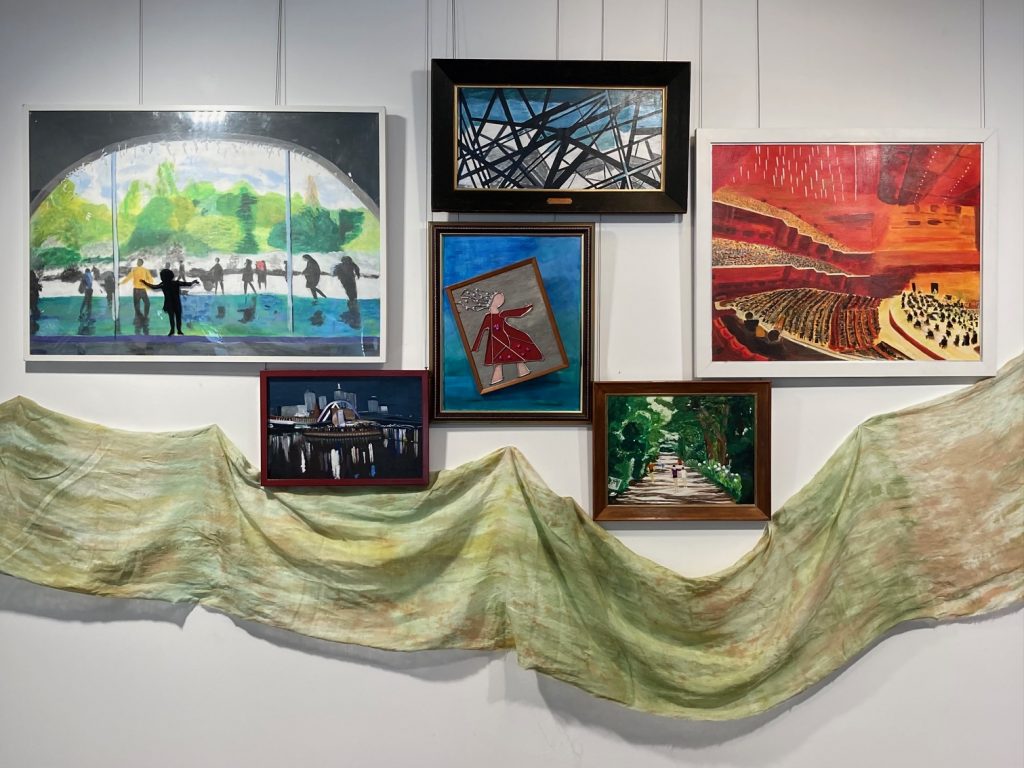Planning My Cultural Cluster
Pat Duncan describes her planning process
The most difficult part of imagining and planning my contribution to the combined exhibition with the Creativity Cluster artists was to decide how I saw Melbourne as ‘My Creative Heart’.
This took a few months before I realised that it is the cultural area bordering the Yarra River that always pulls me in and stimulates my creative process.
South of the river is the National Gallery of Victoria International for visual stimulus and Hamer Hall for concerts that sooth the soul. Across St Kilda Road is the Botanical Gardens to refresh the body.
Further down the river are the bridges, which hold interest in their design and history. North of the river edging into the CBD is the brilliant architecture of Federation Square. Australian art is held at the NGV Ian Potter Centre there.
I wanted to populate the places I chose with the people of Melbourne enjoying the cultural activities in this area, central to the culture of Melbourne and to my creativity.

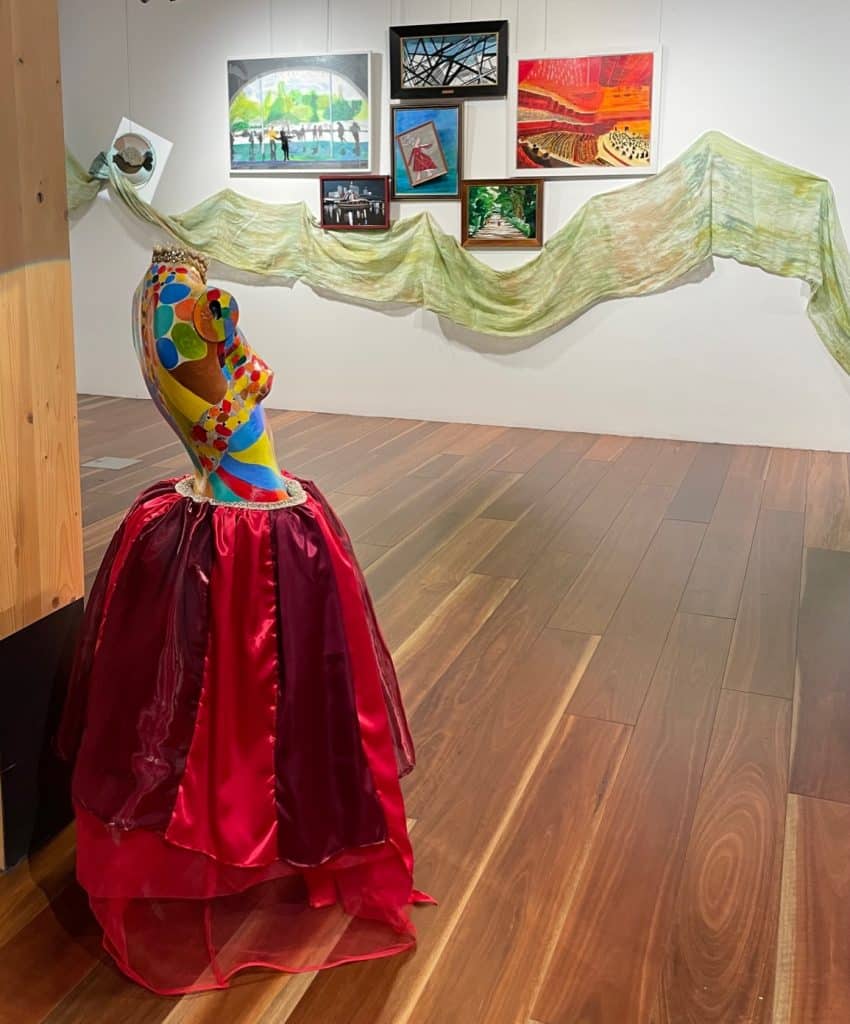
Process and experimentation
For each planned artwork, I initially sketched or painted a watercolour of the scene. This gave me an idea of scale and detail.
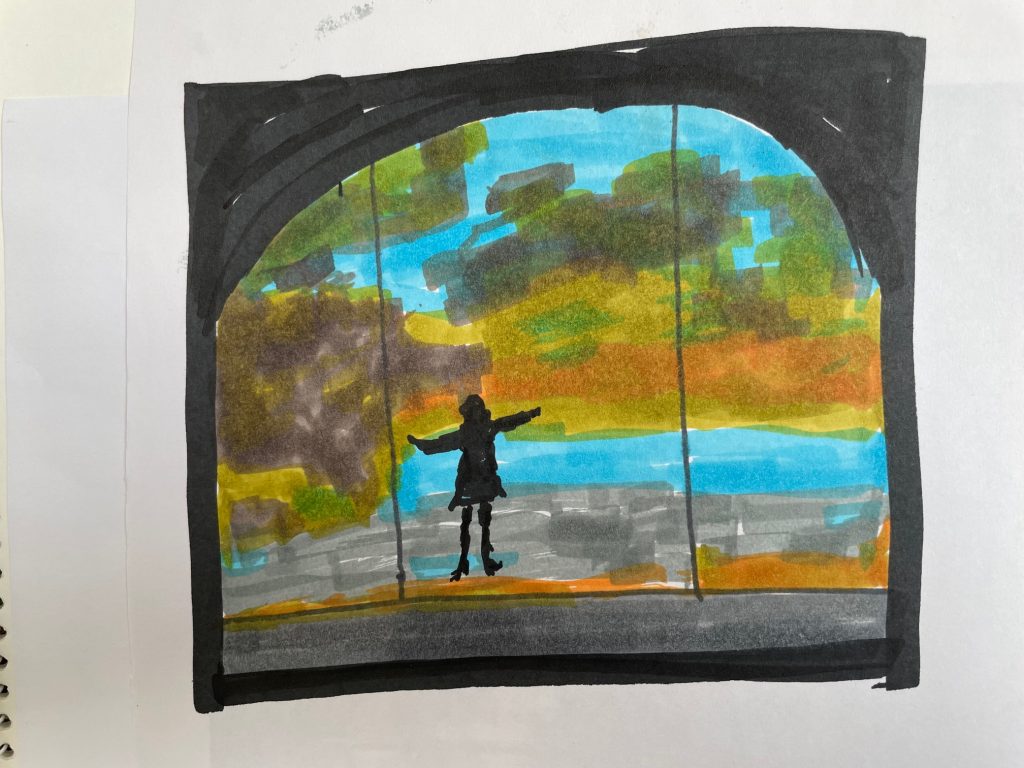
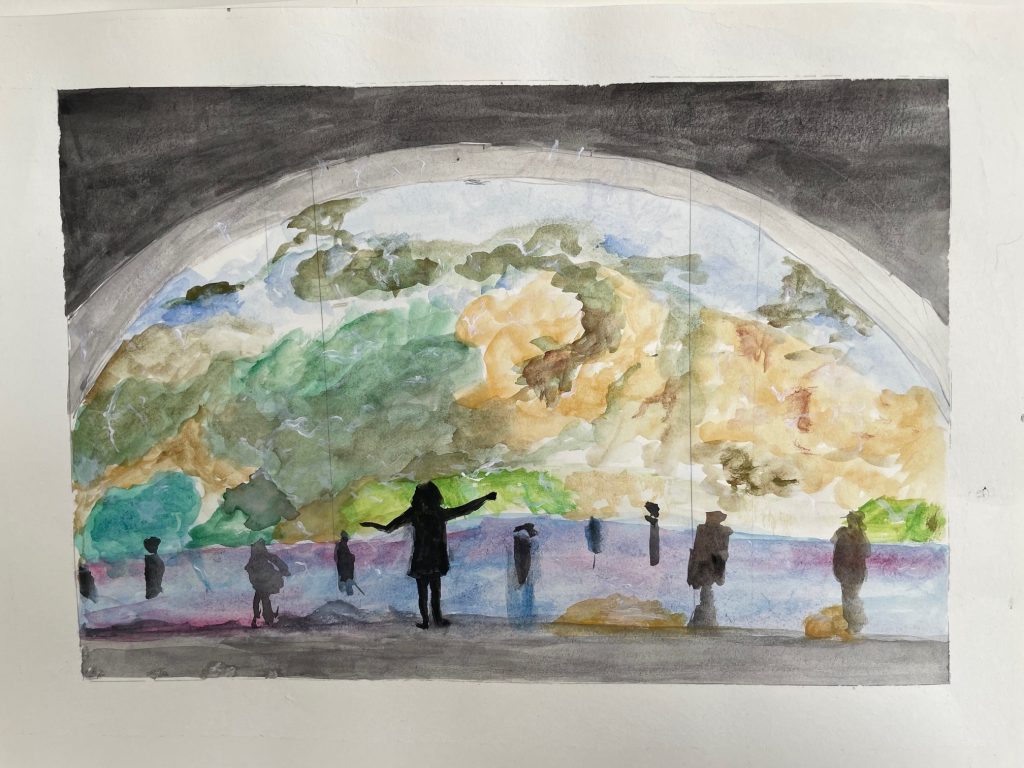



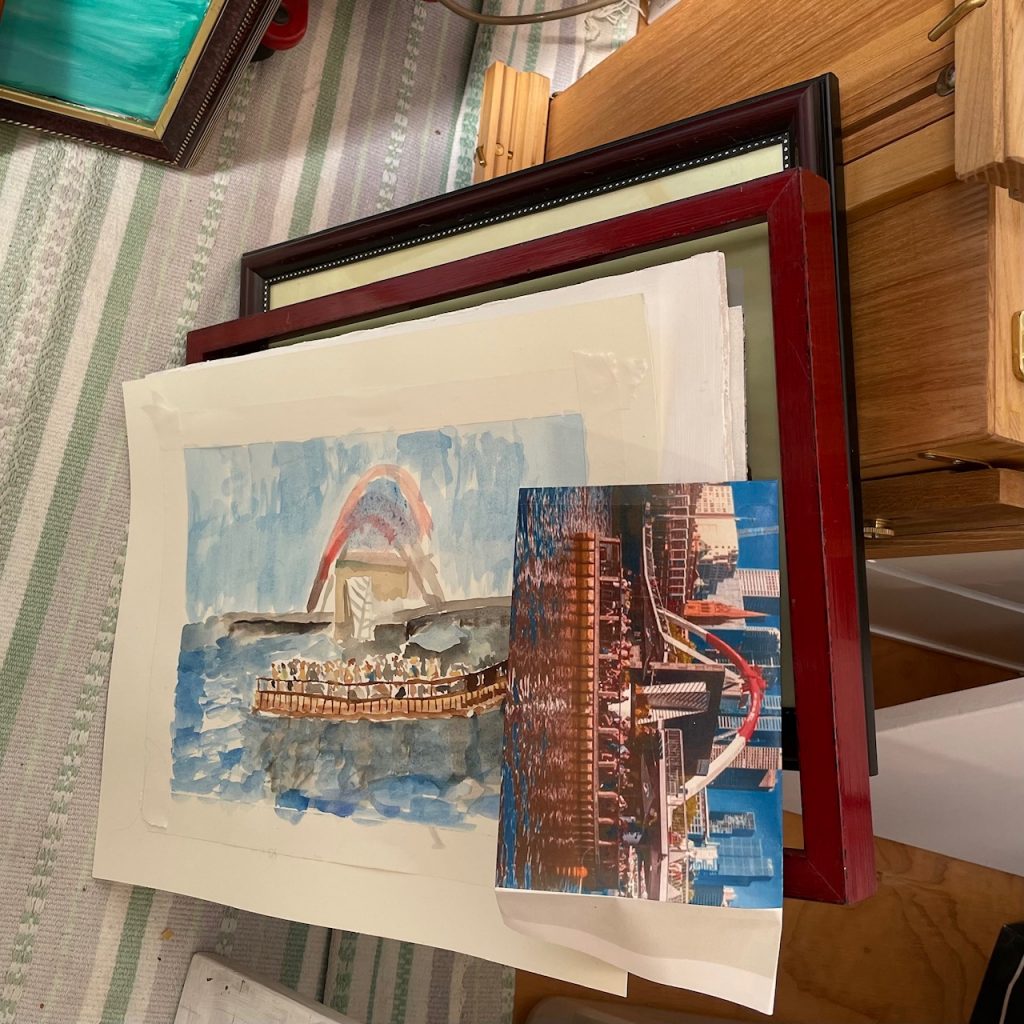
The NGV water wall
The NGV water wall always has people around it. They are often waiting to meet up with friends, or just enjoying the coolness coming from the water streaming down the glass.
I tried to paint the water feature of the water wall separately on the back of the glass (perspex) which came with the frame. I am not happy with the final result.
I had some suggestions from Creativity Cluster artist Deidre Ogilvie, but my countless practice sessions on acetate were not what I was looking for. In the end, I ran out of time. However, I hope to dismantle the painting and redo the wall on real glass using alcohol paints.
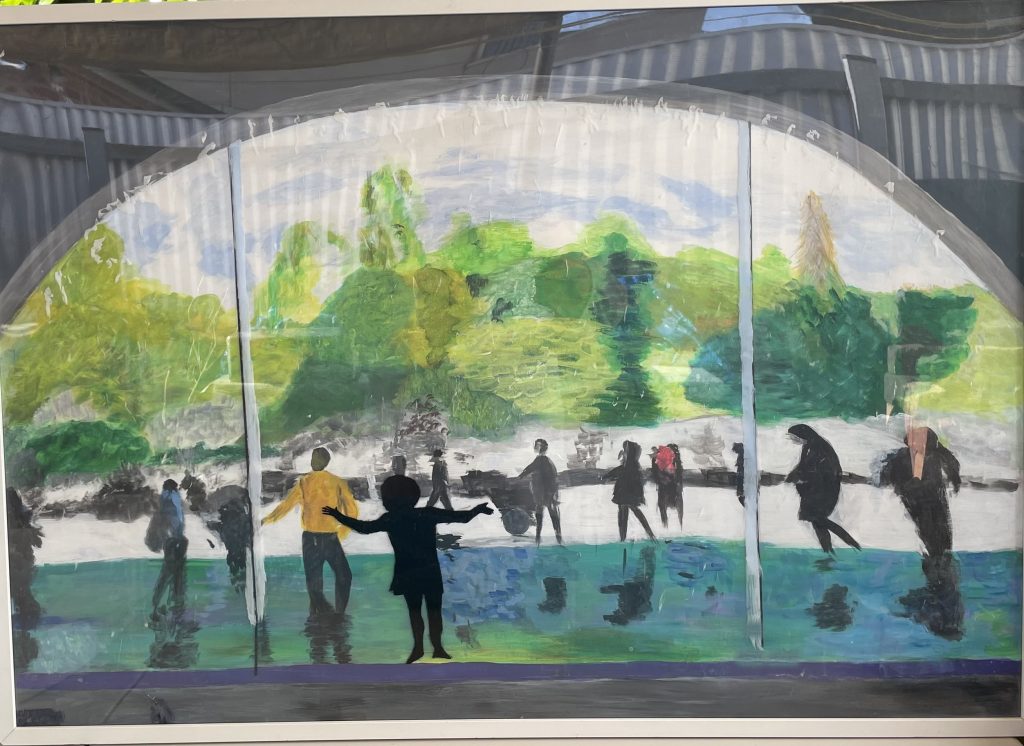
Hamer Hall
The Hamer Concert Hall is one of the venues adjacent to the Art Centre, always well attended when a show or concert is on
The Hamer Hall painting needed an aluminium trivet inserted in the frame and wooden batons were fixed behind to give rigidity to the painting in the frame.
I had extra work with the two large frames, both Hamer Hall and the NGV water wall, as they needed backing and fixing.
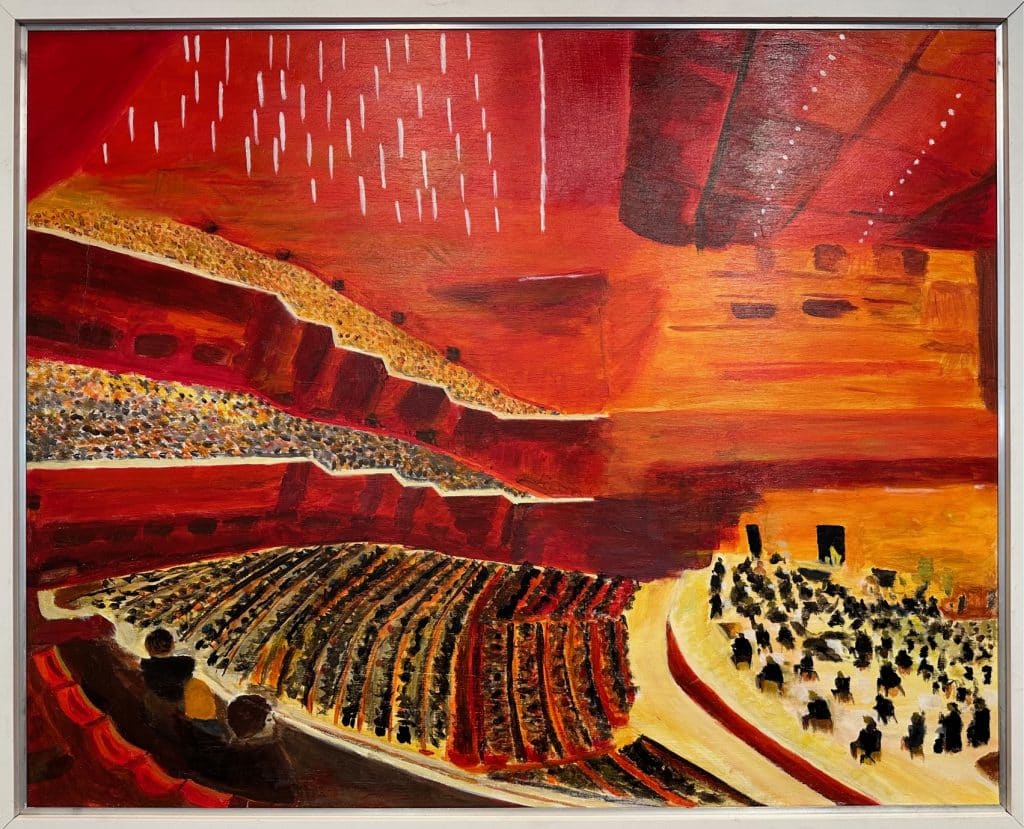
The Atrium
On the other side of the Yarra the atrium roof over the plaza at Federation Square attracted me when visiting the NGV. I found a photo, then simplified it for the painting, though it was still complex to paint.

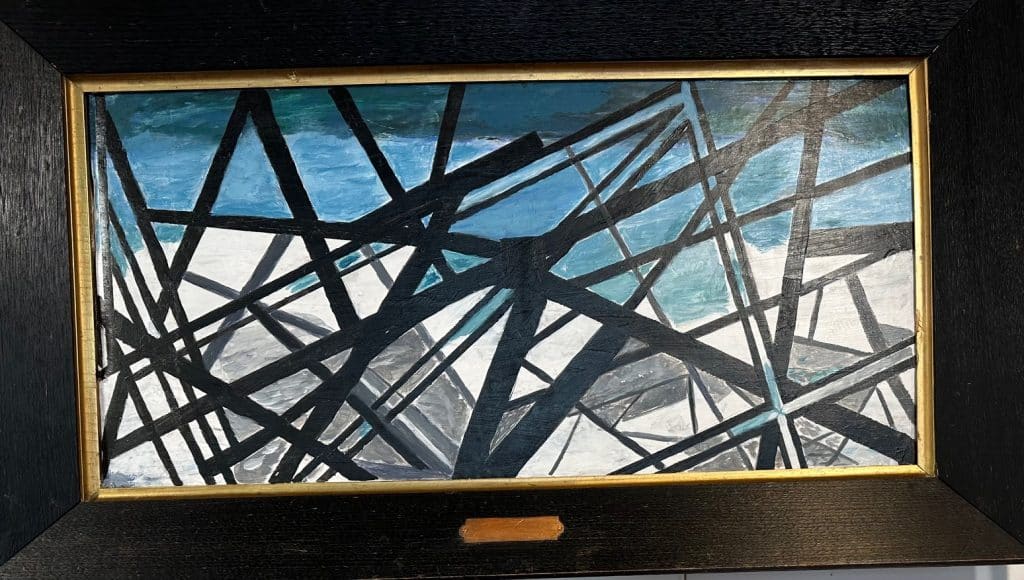
The Tan
The Tan encircling the Botanic Gardens gives shade to those running or walking. I inserted an easel and canvas in the left-hand corner to hint at an artist painting en plein air.
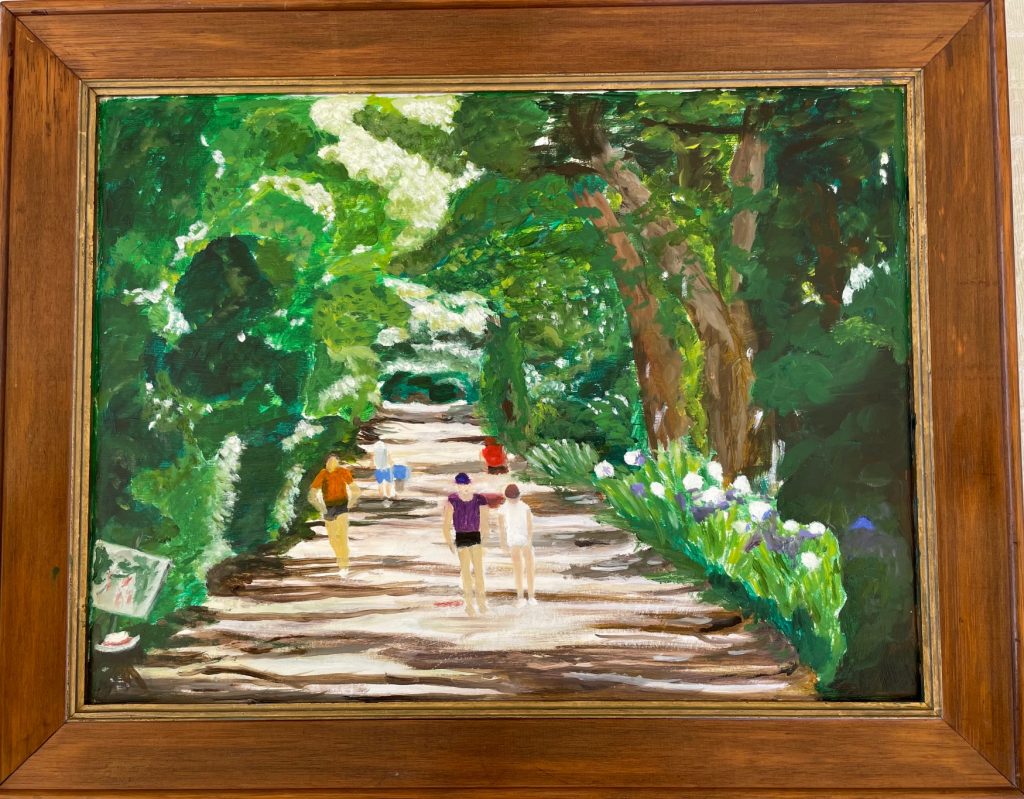
Further downriver
I chose Ponyfish Island, which supports a walkway from Flinders Street Station to Southbank Boulevard. A cafe on the island offers refreshments and seclusion.
At the beginning I wanted to paint a tableau of morning customers waiting for their coffee in the Degraves Street underpass in Campbells Arcade. Unfortunately, by the time Covid restrictions were easing, the underpass and the businesses were closed for lengthy rebuilding as part of the railworks above.
My emphasis on the coffee culture was diverted to Ponyfish Island instead. I painted an evening view, when coffee is replaced by snacks and cold drinks.

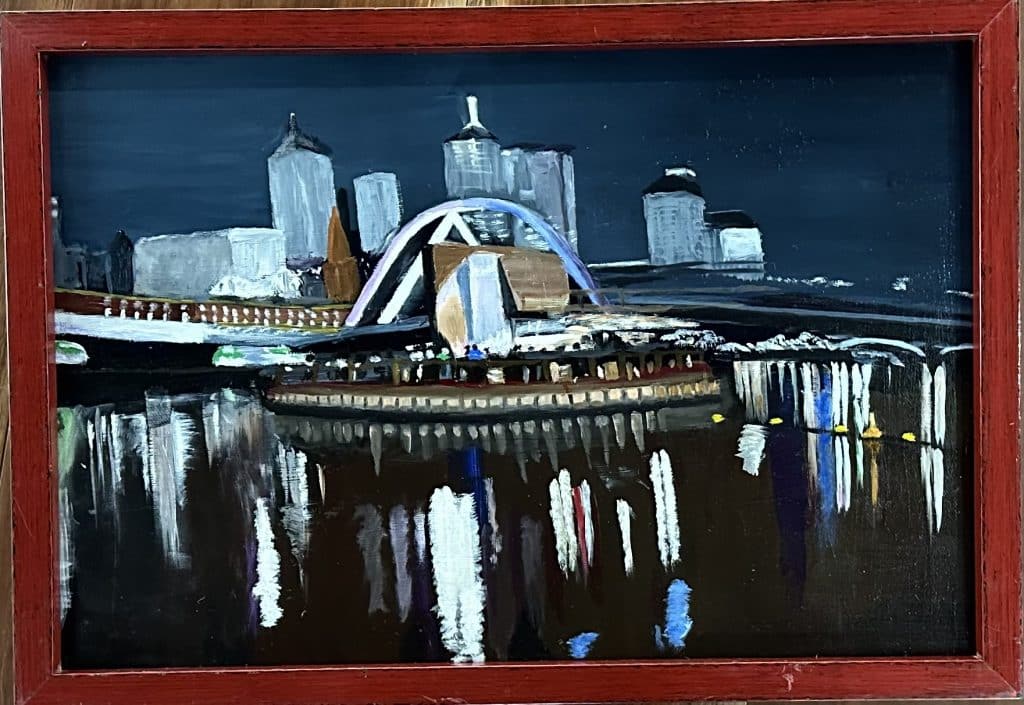
Even further down the river
Even further down the river, the Sandridge Bridge (once with train tracks to Flinders Street) now supports a walkway and a series of stainless steel sculptures. These highlight some of Melbourne’s immigrant history.
I had difficulties with the representation of the sculptures of Sandridge Bridge. I thought it would be easy to make a brief copy of the two refugees fleeing along the bridge. It was not.
I tried cutting and bending soft drink cans – too unwieldy; cutting and rolling tin foil baking tins – still too difficult to roll and bend ; using old fuse wire to make the shape – too fine and in short supply.
Finally, I decided to make the woman only: a very simple silhouette made by cutting coat hangers and highlighted with paint. I gave her the jubilant personality of a new migrant flying to her wedding with pearls in her hair.


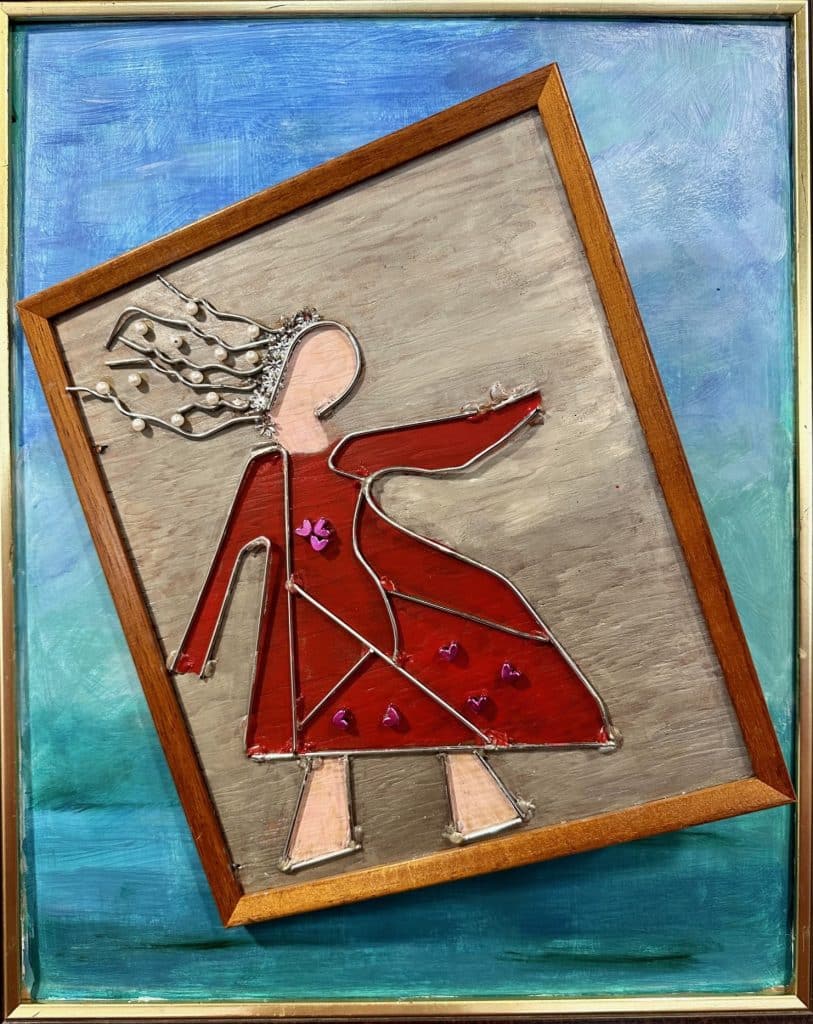
Harlequin Mannequin
I also interpreted the Harlequin Mannequin as a brilliant entry to any Moomba Parade or a busker performing along St Kilda Road.
The basic model was made for an earlier exhibition focused on the use of recycled materials. I raised the mannequin and added a skirt. It is still constructed from recycled materials.

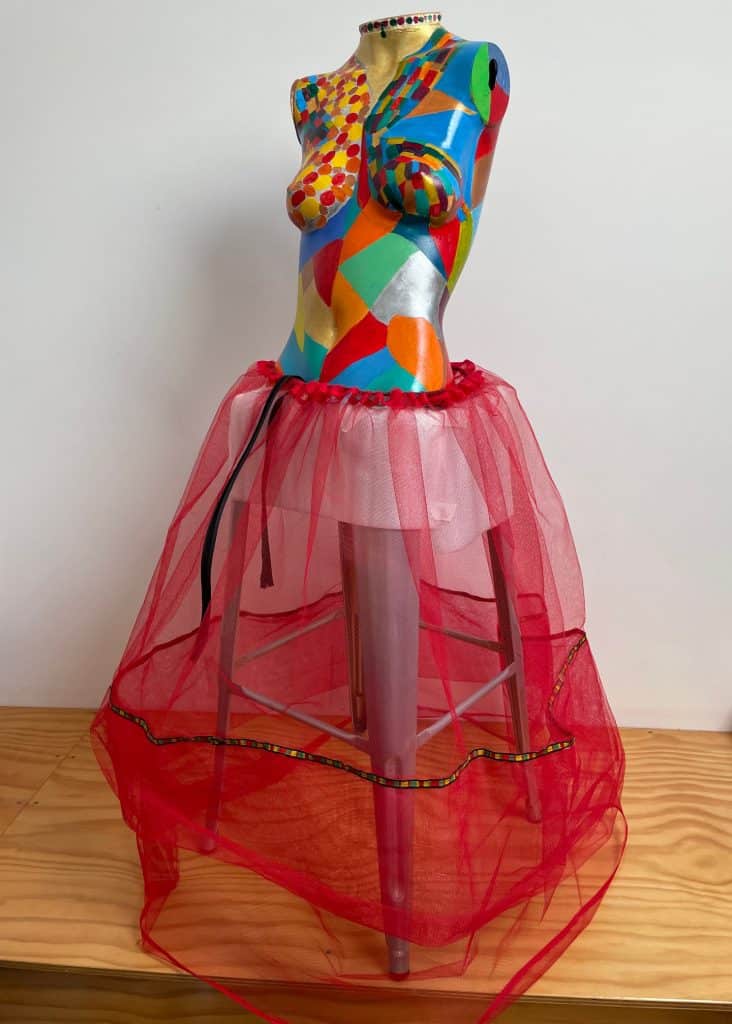
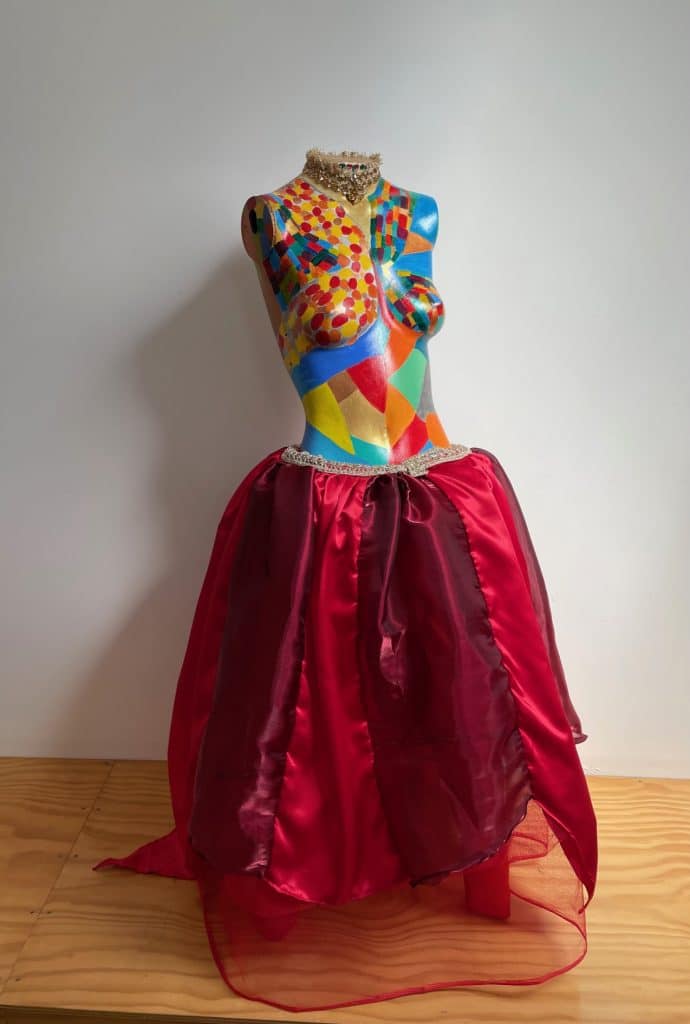
My cluster in the exhibition
Overall this exhibition was a challenge in creative content and, at the end, in practically interpreting my ideas to make the final cluster of framed works. All these works came together in the exhibition at Docklands. They were also united with other artists’ clusters through the river flowing among them (see blog).
